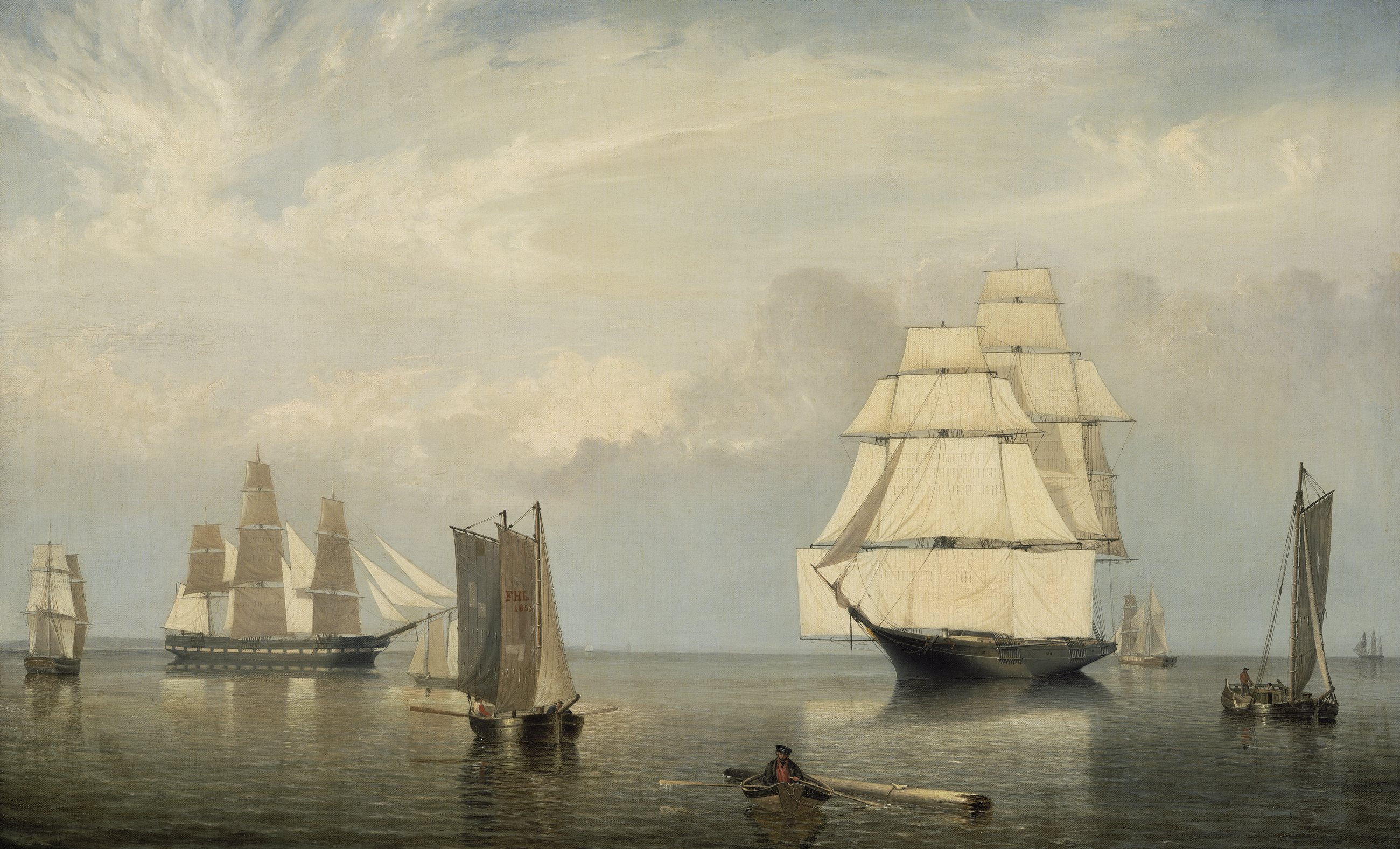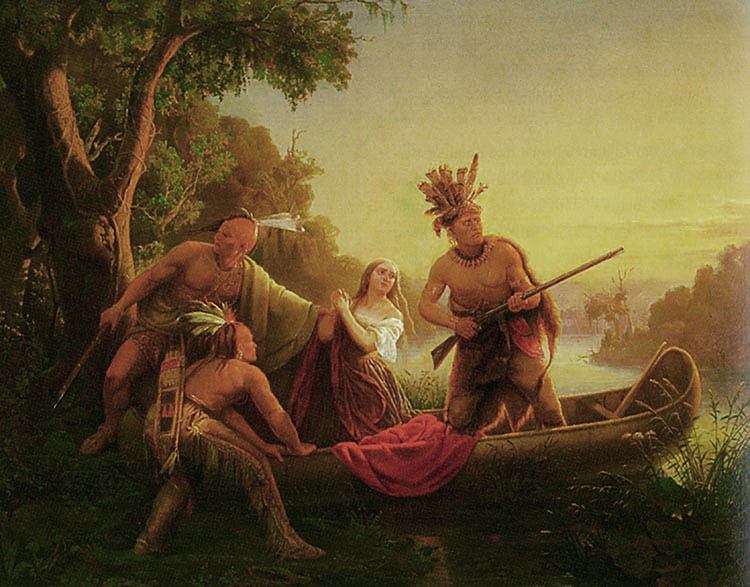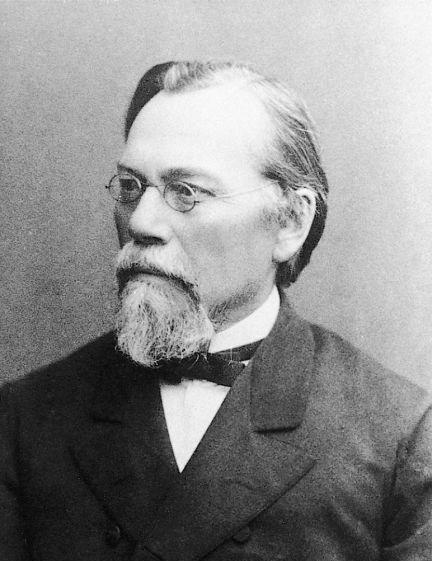|
Louisa Lander
Louisa Lander (1826–1923) was a member of the expatriate community of American women sculptors who settled in Rome in the mid-nineteenth century, led by Charlotte Cushman and Harriet Hosmer. Lander was ostracized from this community in 1859 due to a rumored personal scandal, and many of the details of her later life remain unknown. Early life (Maria) Louisa Lander was born in 1826 in Salem, Massachusetts, to a privileged New England family. She was the great-granddaughter of Elias Hasket Derby, and her grandfather on her mother's side was a relative of the painter Benjamin West. Her father was a ship captain, and her brother, Col. Frederick Lander, Frederick W. Lander, explored the American west. Her family home in Danvers, Massachusetts was decorated with carvings by the Skillin brothers and Samuel McIntire, and she studied these works to fuel her artistic ambitions. She began carving and modeling in wood, alabaster, and sealing wax, and worked professionally as a cameo car ... [...More Info...] [...Related Items...] OR: [Wikipedia] [Google] [Baidu] |
Salem, Massachusetts
Salem ( ) is a historic coastal city in Essex County, Massachusetts, United States, located on the North Shore (Massachusetts), North Shore of Greater Boston. Continuous settlement by Europeans began in 1626 with English colonists. Salem was one of the most significant seaports trading commodities in Colonial history of the United States, early American history. Prior to the dissolution of county governments in Massachusetts in 1999, it served as one of two county seats for Essex County, alongside Lawrence, Massachusetts, Lawrence. Today, Salem is a residential and tourist area that is home to the House of Seven Gables, Salem State University, Pioneer Village (Salem, Massachusetts), Pioneer Village, the Salem Maritime National Historic Site, Salem Willows, Salem Willows Park, and the Peabody Essex Museum. It features historic residential neighborhoods in the Federal Street District and the Charter Street Historic District. [...More Info...] [...Related Items...] OR: [Wikipedia] [Google] [Baidu] |
Captivity Narrative
Captivity narratives are typically personal accounts of people who have been captured by an enemy, generally a enemy with a foreign culture. The best-known captivity narratives in North America are those concerning Europeans and Americans taken as captives and held by the indigenous peoples of North America. These narratives have had an enduring place in literature, history, ethnography, and the study of Native peoples. They were preceded, among English-speaking peoples, by publication of captivity narratives related to English people taken captive and held by Barbary pirates, or sold for ransom or slavery. Others were taken captive in the Middle East. These accounts established some of the major elements of the form, often putting it within a religious framework, and crediting God or Providence for gaining freedom or salvation. Following the North American experience, additional accounts were written after British people were captured during exploration and settlement in India a ... [...More Info...] [...Related Items...] OR: [Wikipedia] [Google] [Baidu] |
Sculptors From Massachusetts
Sculpture is the branch of the visual arts that operates in three dimensions. Sculpture is the three-dimensional art work which is physically presented in the dimensions of height, width and depth. It is one of the plastic arts. Durable sculptural processes originally used carving (the removal of material) and modelling (the addition of material, as clay), in stone, metal, ceramics, wood and other materials but, since Modernism, there has been almost complete freedom of materials and process. A wide variety of materials may be worked by removal such as carving, assembled by welding or modelling, or moulded or cast. Sculpture in stone survives far better than works of art in perishable materials, and often represents the majority of the surviving works (other than pottery) from ancient cultures, though conversely traditions of sculpture in wood may have vanished almost entirely. In addition, most ancient sculpture was painted, which has been lost. [...More Info...] [...Related Items...] OR: [Wikipedia] [Google] [Baidu] |
19th-century American Sculptors
The 19th century began on 1 January 1801 (represented by the Roman numerals MDCCCI), and ended on 31 December 1900 (MCM). It was the 9th century of the 2nd millennium. It was characterized by vast social upheaval. Slavery was abolished in much of Europe and the Americas. The First Industrial Revolution, though it began in the late 18th century, expanded beyond its British homeland for the first time during the 19th century, particularly remaking the economies and societies of the Low Countries, France, the Rhineland, Northern Italy, and the Northeastern United States. A few decades later, the Second Industrial Revolution led to ever more massive urbanization and much higher levels of productivity, profit, and prosperity, a pattern that continued into the 20th century. The Catholic Church, in response to the growing influence and power of modernism, secularism and materialism, formed the First Vatican Council in the late 19th century to deal with such problems and confir ... [...More Info...] [...Related Items...] OR: [Wikipedia] [Google] [Baidu] |
Artists From Salem, Massachusetts
An artist is a person engaged in an activity related to creating art, practicing the arts, or demonstrating the work of art. The most common usage (in both everyday speech and academic discourse) refers to a practitioner in the visual arts only. However, the term is also often used in the entertainment business to refer to actors, musicians, singers, dancers and other performers, in which they are known as ''Artiste'' instead. ''Artiste'' (French) is a variant used in English in this context, but this use has become rare. The use of the term "artist" to describe writers is valid, but less common, and mostly restricted to contexts such as critics' reviews; "author" is generally used instead. Dictionary definitions The ''Oxford English Dictionary'' defines the older, broader meanings of the word "artist": * A learned person or Master of Arts * One who pursues a practical science, traditionally medicine, astrology, alchemy, chemistry * A follower of a pursuit in which skill co ... [...More Info...] [...Related Items...] OR: [Wikipedia] [Google] [Baidu] |
1923 Deaths
In Greece, this year contained only 352 days as 13 days was skipped to achieve the calendrical switch from Julian to Gregorian Calendar. It happened there that Wednesday, 15 February ''(Julian Calendar)'' was followed by Thursday, 1 March ''(Gregorian Calendar).'' Events January–February * January 9, January 5 – Lithuania begins the Klaipėda Revolt to annex the Klaipėda Region (Memel Territory). * January 11 – Despite strong British protests, troops from France and Belgium Occupation of the Ruhr, occupy the Ruhr area, to force Germany to make reparation payments. * January 17 (or 9) – First flight of the first rotorcraft, Juan de la Cierva's Cierva C.4 autogyro, in Spain. (It is first demonstrated to the military on January 31.) * February 5 – Australian cricketer Bill Ponsford makes 429 runs to break the world record for the highest first-class cricket score for the first time in his third match at this level, at Melbourne Cricket Ground, giving the Victor ... [...More Info...] [...Related Items...] OR: [Wikipedia] [Google] [Baidu] |
1826 Births
Events January–March * January 15 – The French newspaper ''Le Figaro'' begins publication in Paris, initially as a satirical weekly. * January 17 – The Ballantyne printing business in Edinburgh (Scotland) crashes, ruining novelist Sir Walter Scott as a principal investor. He undertakes to repay his creditors from his writings. His publisher, Archibald Constable, also fails. * January 18 – In India, the Siege of Bharatpur ends in British victory as Lord Combermere and Michael Childers defeat the princely state of Bharatpur, now part of the Indian state of Rajasthan. * January 30 – The Menai Suspension Bridge, built by engineer Thomas Telford as the first major suspension bridge in world history, is opened between the island of Anglesey and the mainland of Wales. * February 6 – James Fenimore Cooper's novel ''The Last of the Mohicans'' is first printed, by a publisher in Philadelphia. * February 8 – Unitarian Bernardino Rivadavia becomes the first Pr ... [...More Info...] [...Related Items...] OR: [Wikipedia] [Google] [Baidu] |
American Civil War
The American Civil War (April 12, 1861May 26, 1865; also known by Names of the American Civil War, other names) was a civil war in the United States between the Union (American Civil War), Union ("the North") and the Confederate States of America, Confederacy ("the South"), which was formed in 1861 by U.S. state, states that had Secession in the United States, seceded from the Union. The Origins of the American Civil War, central conflict leading to war was a dispute over whether Slavery in the United States, slavery should be permitted to expand into the western territories, leading to more slave states, or be prohibited from doing so, which many believed would place slavery on a course of ultimate extinction. Timeline of events leading to the American Civil War, Decades of controversy over slavery came to a head when Abraham Lincoln, who opposed slavery's expansion, won the 1860 presidential election. Seven Southern slave states responded to Lincoln's victory by seceding f ... [...More Info...] [...Related Items...] OR: [Wikipedia] [Google] [Baidu] |
John Rogers (sculptor)
John Rogers (October 30, 1829 – July 26, 1904) was an American sculptor who produced very popular, relatively inexpensive figurines in the latter 19th century. He became famous for his small genre sculptures, popularly termed "Rogers Groups", which were mass-produced in cast plaster. A total of 80,000 copies of almost 80 Rogers Groups were sold across the United States and abroad. At the height of their popularity, Rogers' figurines graced the parlors of homes in the United States and were found as far away as Chile and Australia. The English novelist Charles Reade furnished his home with all the Rogers figurines available to him, and in the Dakota Territory, Lt. Col. George Custer and his wife had one. Often selling for $15 apiece, the figurines were affordable to the middle class. Instead of working in bronze and marble, he sculpted in more affordable plaster, painted the color of putty to hide dust. Rogers was inspired by popular novels, poems and prints as well as the sce ... [...More Info...] [...Related Items...] OR: [Wikipedia] [Google] [Baidu] |
Nathaniel Hawthorne
Nathaniel Hawthorne (né Hathorne; July 4, 1804 – May 19, 1864) was an American novelist and short story writer. His works often focus on history, morality, and religion. He was born in 1804 in Salem, Massachusetts, from a family long associated with that town. Hawthorne entered Bowdoin College in 1821, was elected to Phi Beta Kappa in 1824, and graduated in 1825. He published his first work in 1828, the novel ''Fanshawe (novel), Fanshawe''; he later tried to suppress it, feeling that it was not equal to the standard of his later work. He published several short stories in periodicals, which he collected in 1837 as ''Twice-Told Tales''. The following year, he became engaged to Sophia Hawthorne, Sophia Peabody. He worked at the Boston Custom House and joined Brook Farm, a Transcendentalism, transcendentalist community, before marrying Peabody in 1842. The couple moved to The Old Manse in Concord, Massachusetts, later moving to Salem, the Berkshires, then to The Wayside in Concord ... [...More Info...] [...Related Items...] OR: [Wikipedia] [Google] [Baidu] |
Erastus Dow Palmer
Erastus Dow Palmer (April 2, 1817March 9, 1904) was an American sculptor. Life Palmer was born in Pompey, New York on April 2, 1817. He was the second of nine children. He showed early artistic promise, and pursued his father's trade of carpentry. Palmer married Matilda Alton in 1839 and had a son, but both mother and child died soon after; he remarried, to Mary Jean Seamans, in 1840, and settled in Utica, New York. In his leisure moments as a carpenter Palmer started by carving portraits in cameo, and earned the encouragement of Thomas R. Walker, a local art patron in Utica, who introduced him to prominent artists in New York City. Sculpture By 1849, Palmer had relocated to Albany with his family and had transitioned from cameo-cutting to large-scale sculpture. He worked in a primarily neoclassical style. Palmer mounted an exhibition of twelve of his sculptures, known as "the Palmer Marbles," at the National Academy of Design in 1856, aiding his rise to prominence. His maj ... [...More Info...] [...Related Items...] OR: [Wikipedia] [Google] [Baidu] |










